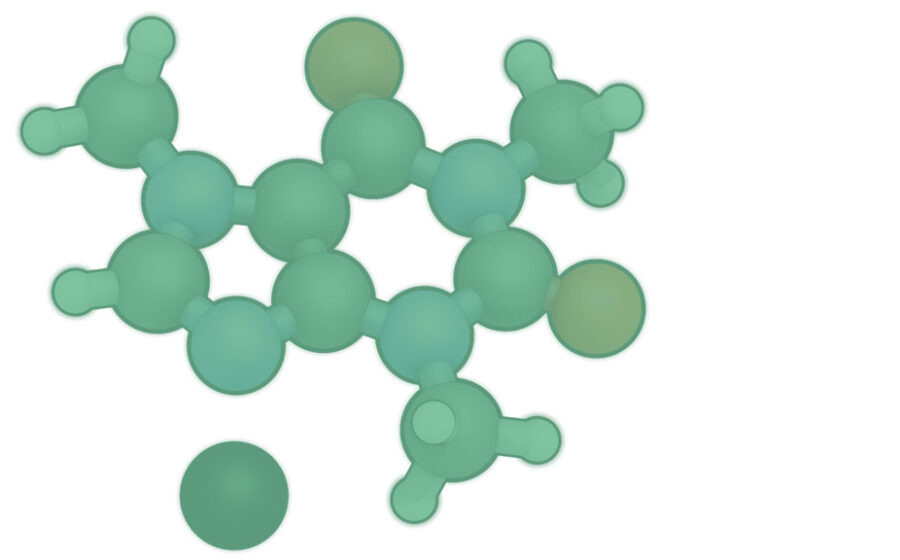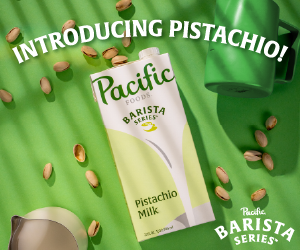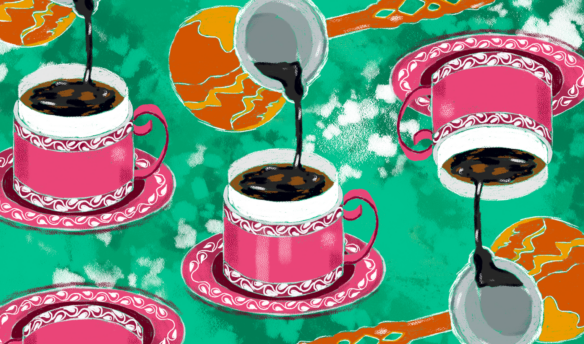A caffeine molecule (image: Christopher Hendon.)
[T]he West Coast boasts an impressive collection of renowned roasters and cafés, and tourists, especially coffee pros, delight in the opportunity to take coffee home. But what if they live somewhere like Texas, where water has a much higher dissolved mineral content than it does along the Pacific? Barista skills aside, it’s exceedingly difficult to replicate the quality and flavor profile of coffee brewed in a Portland café without insight into the mineral makeup of your local water. But why?
After a read through the book Water for Coffee, you’ll be able to answer that question. For science nerds, education advocates, and coffee lovers in pursuit of perfect extraction, Water for Coffee elucidates water’s crucial role in brewing and extraction.
Authored by Maxwell Colonna-Dashwood and Christopher Hendon, Water for Coffee combines the expert knowledge of a seasoned, competitive barista and an MIT post-doctoral chemist. Whether your background is founded more strongly in coffee or in chemistry, the collective voice of Colonna-Dashwood and Hendon presents practical education for scientists and coffee enthusiasts alike.
Pointing out challenges of current industry conventions (such as the heavy reliance on IC-TDS meters, which quantify dissolved mineral concentration without insight to mineral identity), Hendon and Colonna-Dashwood offer guidance to overcome debilitating water issues faced in roasting, café settings, and at home. By exploring scientific principles governing chemical interactions in the context of coffee, Water for Coffee fosters a deep appreciation for water’s comprehensive influence on each drop of extraction.
Understanding your water isn’t as simple as getting a TDS reading and filtering out sediment; the particular makeup of those dissolved solids heavily influences the interaction of coffee and water. Beginning with short courses in chemistry and physics, Colonna-Dashwood and Hendon provide foundational knowledge of water’s properties and the behavior of dissolved minerals. The science lessons are supplemented with practical applications in the café: methods for measuring dissolved mineral concentrations, filtration options for manipulating water makeup, specifications for brewing, and case studies from the industry.
Working through the book’s highly technical pages, I found myself grateful (finally) for the hours spent studying physics and chemistry in my college days: this book is certainly not for the faint of scientific heart. But for those who want to delve into coffee’s technical side, each chapter of Water for Coffee holds rewarding nuggets of knowledge and encouraging commentary for those seeking a better product.
Water for Coffee is available through waterforcoffeebook.com.
—Ellie Bradley is Fresh Cup‘s associate editor.
















